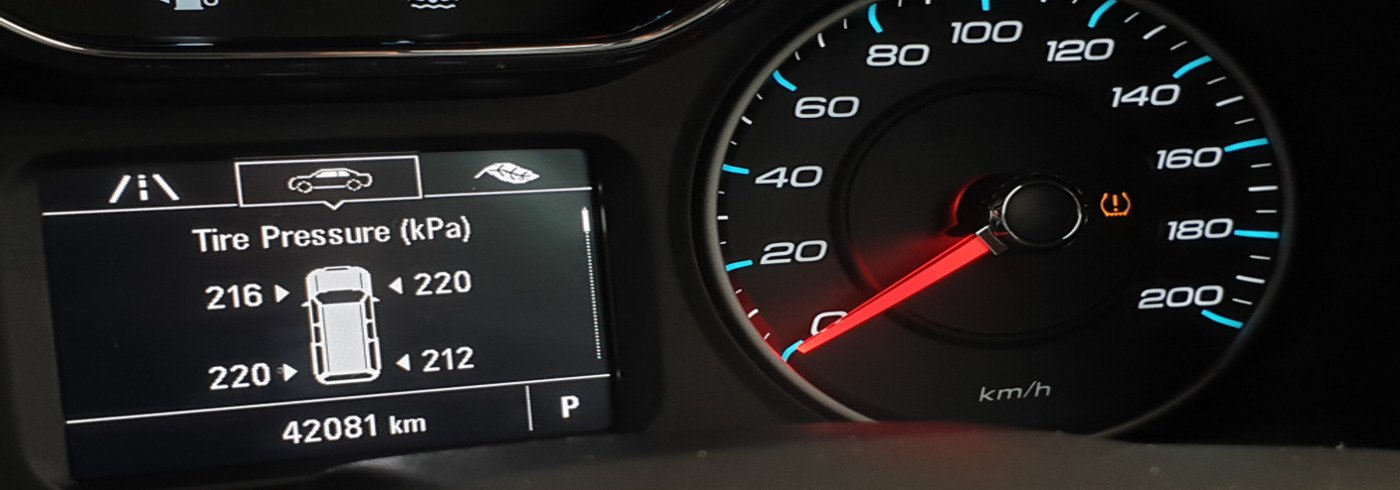
Tire Pressure Sensors: How Do They Work?
Tire pressure sensors are essential components of modern vehicles, designed to monitor and alert drivers to potential problems with their tires. These innovative devices detect low tire pressure or TPMS malfunction, ensuring optimal tire service and safety.
In this article, we'll help you discover the TPMS technology, followed by answers to some of the most frequently asked questions regarding the low tire pressure sensor. So without further ado, read on.
TPMS Sensor Location: Where Are TPMS Sensors Located?
The tire pressure sensor is typically found within the tire itself, mounted on the wheel assembly. These sensors relay crucial information to the vehicle's computer, triggering the tire pressure sensor light when a discrepancy is detected.
So, where is the location of tire pressure sensor? In most cases, they are attached to the valve stem or banded to the wheel inside the tire. By figuring out the exact TPMS sensor location, drivers can better maintain their vehicle's tire health and ensure a safe and efficient journey throughout.

What Are the Main Types of TPMS?
Direct TPMS
Direct Tire Pressure Monitoring Systems (TPMS) utilize sensors situated inside each wheel to accurately measure individual tire pressure. How do these tire pressure sensors work? These sensors constantly monitor and relay data to the vehicle's onboard computer, which alerts the driver if the pressure in any tire falls below the manufacturer's recommended level.
Indirect TPMS
Indirect TPMS do not rely on wheel-mounted sensors like their direct counterparts. Instead, they use the vehicle's existing wheel speed sensors, part of the Anti-lock Braking System (ABS), to detect discrepancies in rotational speed among the tires.
Tire Pressure Monitoring and Alert System (TPAS)
TPAS combines the technology used in both direct and indirect TPMS to provide a comprehensive monitoring solution. How do pressure sensors work? By integrating the precise pressure measurements of direct and the cost-effective, maintenance-friendly approach of indirect, TPAS delivers an advanced system that alerts drivers when one or more tires have low pressure. This hybrid system offers the best of both worlds, maximizing safety and efficiency on the road.
How Tire Pressure Sensors Communicate With Your Car
Understanding how TPMS sensors communicate with your car is crucial for maintaining optimal tire performance and safety. These sensors constantly monitor tire pressure and relay this information to the vehicle's onboard computer. So, how do TPMS sensors communicate with the rest of the system? They typically use wireless technology, such as RF signals, to transmit the collected data.
When a tire's pressure drops below the recommended threshold, the TPMS sensors transmit a signal to the vehicle's computer, which then triggers a low tire pressure warning. This alert allows drivers to address the issue promptly and maintain proper tire inflation (32 psi to 35 psi when they’re cold).
In some cases, especially when replacing a sensor or rotating tires, it might be necessary to program tire pressure sensor to ensure accurate communication with the vehicle's computer. This process, often performed by a professional mechanic or tire service technician, involves syncing the TPMS sensor with the car's computer so that it correctly identifies each tire and its corresponding data.
By understanding the communication process between TPMS sensors and your vehicle, you can ensure a safer and more efficient driving experience, maximizing tire life and fuel economy.
How to Reset the TPMS Sensor (Or How to Reset Tire Pressure Sensors)
Resetting the TPMS sensor, or performing a tire pressure sensor reset, is sometimes necessary to ensure that the reset functions correctly. This process typically involves programming tire pressure sensors (and, in some cases, reprogramming them) or especially after a tire rotation, sensor replacement, or when the vehicle displays a low-pressure warning despite properly inflated tires.
Here's a guide on how to reset the TPMS sensor:
- Inflate all tires to the recommended air pressure specified in your owner's manual or on the driver's side door jamb placard and turn the ignition to the "ON" position, but do not start.
- Locate the TPMS reset button or follow the specific procedure in your owner's manual (the button is typically found under the dashboard, in the glove box, or near the steering column).
- Press and hold the TPMS reset button (or follow the reset procedure in your owner's manual) until the tire pressure monitoring system reset process begins. You should see the TPMS warning light (red/green color) on the dashboard blink, indicating that the system is resetting.
- Once the tyre pressure monitoring system warning light stops blinking and remains illuminated, the reset process is complete. Release the reset button and turn off the ignition.
- Start the engine and check to ensure that the TPMS warning light has been turned off. If it continues, you may need to repeat the process or consult a professional mechanic.
How Much Does It Cost to Replace a Tire Pressure Sensor?
The tire pressure sensors cost can vary depending on a few factors, such as your vehicle's make and model, manufacturing year, and availability of parts. Generally, you can expect to pay between $30 and $50 per tire pressure sensor. When you visit a reputable tire shop, replacing all four TPMS modules should take less than an hour, with a minimal labor fee added to the component expenses. As a result, the overall tire pressure sensors price for each wheel should be within $70 to $150.
Remember that if the remaining three sensors are over a decade old, replacing them with new, smart ones is recommended, even if only one auto sensor needs replacement. By doing this, you can ensure consistent performance of the program and avoid the inconvenience of frequent replacements.
What Happens When a Tire Pressure Sensor Malfunctions?
When a tire pressure sensor malfunctions, it can lead to inaccurate readings, false warnings, loss of monitoring capabilities, and increased maintenance costs. This can cause unnecessary adjustments, uneven tire wear, reduced fuel efficiency, confusion, and potential neglect of actual tire pressure issues. On the other hand, in severe cases, these malfunctions can result in driving on underinflated or overinflated tires, increasing the risk of tire failure, poor handling, and compromised safety.
To conclude, understanding how tire pressure sensor works is crucial for maintaining optimal tire performance and ensuring a safe driving experience. When issues arise, it's vital to seek professional help to accurately diagnose and eliminate the underlying cause, and that’s where we come in.
Get Professional Tire Service @ Creamery Tire Inc
At Creamery Tire Inc, we pride ourselves on providing exceptional service that sets us apart from other tire shops. Our experienced team is committed to offering a unique customer experience with transparency and convenience at the forefront. With no hidden fees, you can trust that our pricing is fair and upfront, without any attempts to upsell or add unexpected charges. Plus, our no-appointment-necessary policy ensures that you can get the help you need when it matters most.
So, when you're in need of expert advice or assistance with your tire pressure sensors, don't hesitate to contact us. For more information, feel free to give us a call at 610-489-2122.
